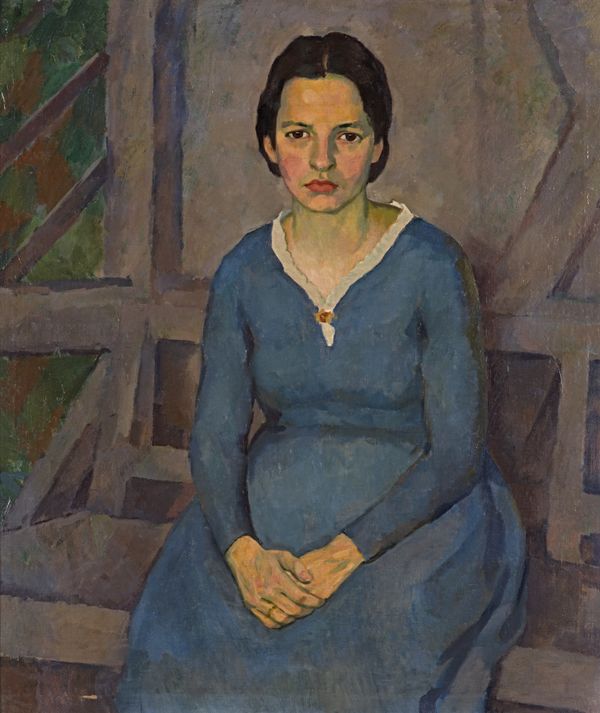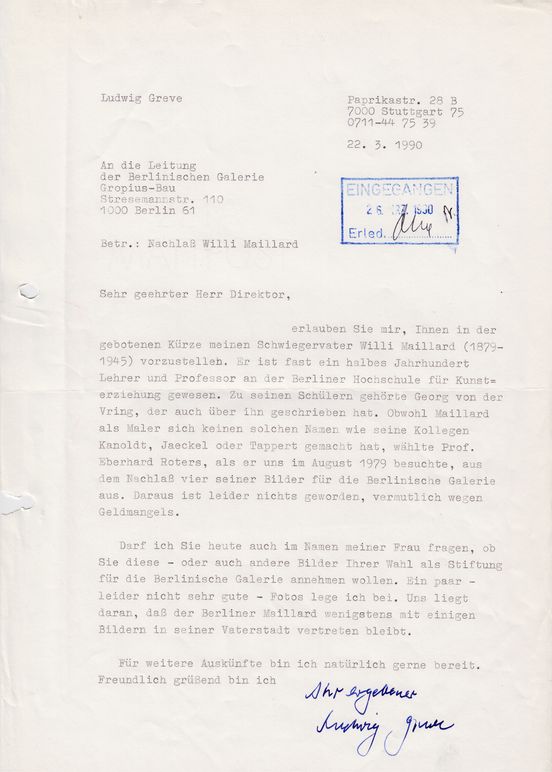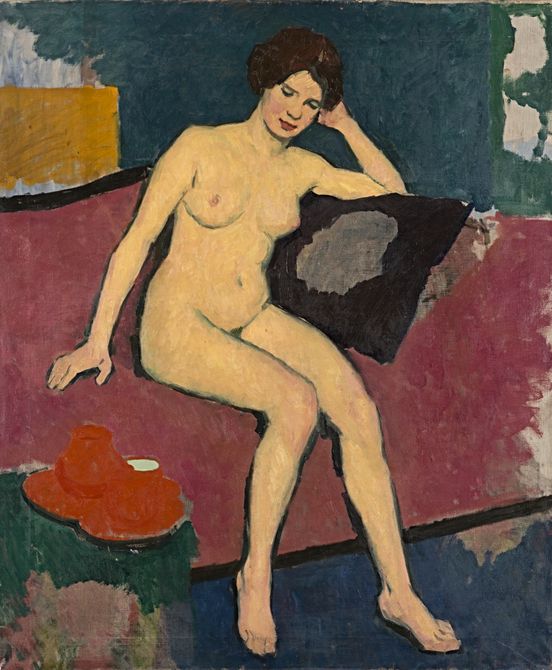| Genre | Painting |
| Materials | Oil on canvas |
| Size | 120 x 100 cm |
| Signature | unsigned |
Restored with the support of the Ernst von Siemens Kunststiftung
Research status
Provenance is established. The work does not qualify as a cultural asset extorted due to Nazi persecution.
A private picture?
Willi Maillard (1879–1945) left this painting with vivid blocks of colour unsigned and possibly unfinished. It is not clear who sat for him. It might have been his wife Cläre (1892–1966), née Zechlin, whom he married in 1910. There is a certain similarity with a portrait painted ten years later.

Cläre Maillard, portrayed by Willi Maillard in around 1920. She might have been the model for “Naked Woman”.
Cläre Maillard, c. 1920 portrayed by Willi Maillard
© Copyright has expired, Repro: Kai-Annett Becker“Prof. Maillard (Royal Art College, Berlin) began teaching me in 1912. He was a stimulating instructor, taught his pupils to sense the essence and charm of the paint, told us about Van Gogh and Cezanne [sic] and goaded us fanatically. There were strong, colourful watercolours and woodcuts of Japanese influence.”
Georg von der Vring (1889–1968), probably around 1930.

The note “Mr Maillard” on the stretcher frame. Apparently, the artist left the painting somewhere for a while for unknown reasons.
Willi Maillard, Nackte Frau, 1911/12 (Back, Detail)
© Repro: Kai-Annett BeckerThere is no reason to assume that Maillard ever wanted to exhibit this work. If the “Naked Woman” really is Cläre, the painting may not have been intended for public consumption. It stayed in the family. However, someone has pencilled “Mr Maillard” on the stretcher. That suggests that at some unspecified point in time the painting was left with someone else.
In 1943, after an air raid over Berlin destroyed his home and studio along with some of his works, Maillard moved to Konstanz with his family. He died there in 1945. Cläre Maillard spent her final years until 1966 in Meersburg and West Berlin.
Maillard’s daughter Katharina and her husband Ludwig Greve first contacted the Berlinische Galerie in 1979. They asked if the museum was interested in Willi Maillard’s artistic estate. Founding director Eberhard Roters recognised the quality of his painting and was prepared to take on four works. However, contact was broken off. Not until 1990 did Maillard’s son-in-law get in touch with the Berlinische Galerie again and arrange for several permanent loans.
Ludwig Greve died in 1991. Katharina Greve and her daughter Julia decided in 1995 to make a generous donation of 24 works, including “Naked Woman”.

Letter of Ludwig Greve to Jörn Merkert, 22 March 1990
© Repro: Berlinische Galerie